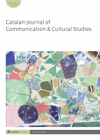
Full text loading...

Interactive documentaries have been growing in number and importance on the international scene in numerous fields and markets. Interactive documentaries entered the field of health about a decade ago, and since then they have proven to be a worthwhile tool for exploring various health issues, such as living with HIV. More recently, experts and academics have started to explore interactive documentaries dealing with a newly emerging topic – stigma. Stigma has negative consequences in every aspect of a person’s life. When it comes to health, people with stigmatized conditions have the worst outcomes, a problem ultimately related to their own power and agency. The media and culture are two structural sources of stigmatization, and cultural trauma has been suggested as one of its mediators. This study seeks to examine interactive documentaries as a tool for raising awareness of the impact of HIV-related stigma and cultural trauma. To this end, it analyses two interactive documentaries, Vertical/Horizontal and The Graying of AIDS, focusing on the device, narrative and textual elements used by these documentaries to deal with the impact of stigma in health, and elaborating on how these cultural productions represent people living with stigma and whether that representation challenges or reinforces stigmatization.

Article metrics loading...

Full text loading...
References


Data & Media loading...

Publication Date:
https://doi.org/10.1386/cjcs_00032_1 Published content will be available immediately after check-out or when it is released in case of a pre-order. Please make sure to be logged in to see all available purchase options.